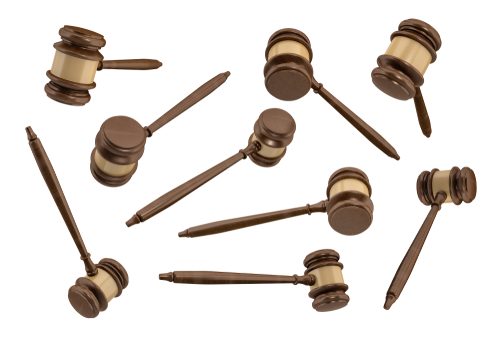Judges Hash Out Possible Changes to Judicial Disqualification Rules
It is a given that democracy is necessarily messy, and perhaps also more interesting at just such times. Things certainly sounded that way Friday afternoon at the ABA Annual Meeting programs concerning judicial disqualification and proposed changes in the ABA Model Code of Judicial Conduct (per, in effect, recommendation of the U.S. Supreme Court).
Back-to-back sessions by the Standing Committee on Judicial Independence—“Second Annual Forum on Judicial Independence: The Changing Landscape of Judicial Disqualification” and a roundtable discussion presented by the ABA Standing Committee on Ethics and Professional Responsibility—showed how the effort for stricter, more detailed guidelines is both sticky and thorny.
Three years ago when the Supreme Court ruled in Caperton v. A.T. Massey Coal Co. that independent campaign expenditures on behalf of a West Virginia supreme court justice running for re-election created a “serious risk of actual bias,” it also recommended states with judicial elections adopt stricter disqualification standards to shield against the recent influx of huge amounts of cash into such races.
Then six months later, the high court threw gasoline on still hot coals of the fire many hoped it had somewhat extinguished: In Citizens United v. Federal Election Commission the court said independent expenditures by corporations and unions could throw all the money they wanted at elections.
During Friday’s presentations, state judges expressed concerns about a one-size-fits-all approach, given that states have tinkered to make their own versions of the Code of Judicial Conduct, have different election and appointment systems and different legal cultures.
When the roundtable got granular during the roundtable, Myles V. Lynk, chair of the ABA Standing Committee on Professional Discipline, assured others, for example, that any revisions to the code would not include specific dollar amounts for contributions that could trigger need for disqualification. There will be brackets in the model and states can fill in the blanks.
The practical impact of heightened interest, partisanship and money in state judicial elections was apparent in the plight of one of the four state supreme court justices on the earlier panel. Justice Peggy Quince of the Florida high court said her retention election this year is quite different than in the past.
For one, she and two other colleagues have been sued by parties trying to get them off the ballot, which brings up a particularly interesting question for the future as far as conflicts and disqualifications are concerned.
“What lawyer can you get who you would want to represent you that does not have a lot of cases that are going to come before the court?” Justice Quince asked, getting a good laugh in mid-sentence from others in the conference room.
A lot of the good lawyers are in big firms involved in the state’s abundant tobacco litigation, for example, with cases that might be high-court bound.
The other justices were Georgia’s Chief Justice Carol W. Hunstein, North Carolina Justice Mark D. Martin and Justice Brent D. Benjamin of West Virginia.
It was Benjamin’s re-election that Massey Coal pumped so much money into. The justice noted something that apparently Massey didn’t put before the U.S. Supreme Court: Prior to the case at hand, he had ruled against Massey 80 percent of the time and that for every dollar the company got in benefit from his decisions, it lost $6 in others. His votes on various decisions helped cost the company $17 million.
“I have never seen $3 million,” Benjamin told the audience. “I’m a state employee and I drive a 1997 Toyota.”
Sept. 15 is the deadline for comments on the work-in-progress draft of revisions to the model code.



